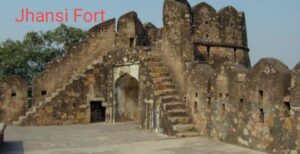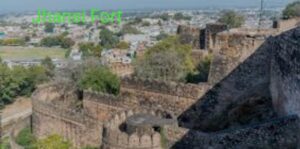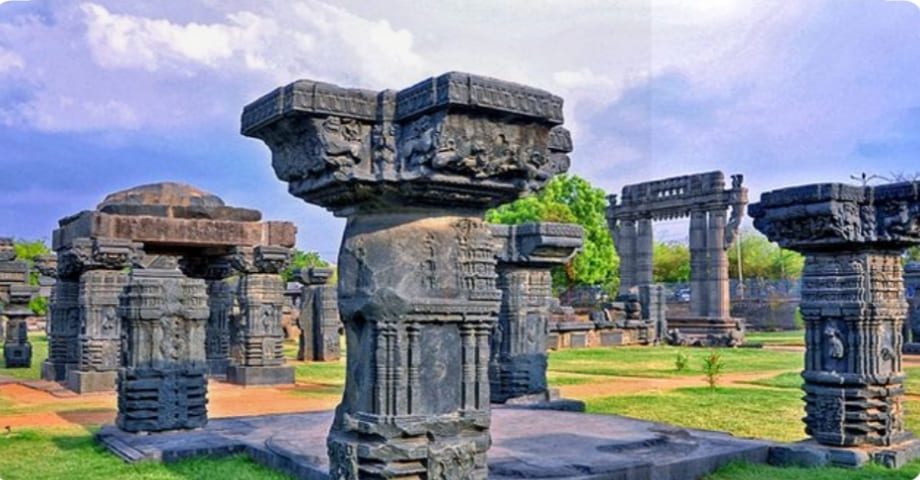Jhansi Fort, a symbol of valor and resilience, stands as a proud testament to India’s rich history. Nestled in the heart of Uttar Pradesh, this fort played a crucial role during the Indian Rebellion of 1857, especially under the leadership of the legendary Rani Lakshmibai. This blog post delves into the historical significance, architectural splendor, and cultural impact of Jhansi Fort, offering readers a comprehensive guide to this iconic landmark.

1. Jhansi Fort:Historical Background
Constructed in the early 17th century by Raja Bir Singh Deo of Orchha, Jhansi Fort has witnessed numerous historical events. Initially built to serve as a strategic stronghold, the fort became a prominent center of power and defense. Over the centuries, it withstood various attacks and played a pivotal role in shaping the region’s history.
One of the most notable periods in the fort’s history was during the Indian Rebellion of 1857. Jhansi Fort became a symbol of resistance against British colonial rule, with Rani Lakshmibai leading her forces from within its walls. The fort’s strategic location and robust defenses made it a significant asset during the rebellion.
2.Jhansi Fort:Architectural Features
Jhansi Fort is renowned for its unique architectural style, combining elements of Bundela and Rajput architecture. Spanning over 15 acres, the fort is perched atop a hill, offering a commanding view of the surrounding area.
• Key Structures:
– Baradari: A beautiful pavilion within the fort, known for its intricate carvings and historical significance.
– Panch Mahal: A five-story palace that once served as the residence of the royal family.
– Ganesh Temple: An ancient temple within the fort, dedicated to Lord Ganesha, which remains a site of worship for locals and visitors alike.
– Kadak Bijli Cannon: A powerful cannon used during the defense of the fort, now a popular attraction for visitors.
The fort’s robust defensive features include thick walls, numerous bastions, and strategically placed gateways, designed to withstand sieges and attacks. The use of local stone and traditional construction techniques adds to its historical charm and durability.

3.Jhansi Fort: Role of Rani Lakshmibai
Rani Lakshmibai, the fearless queen of Jhansi, is intrinsically linked to the fort’s history. Born as Manikarnika, she became the queen of Jhansi after her marriage to Maharaja Gangadhar Rao. Following her husband’s death and the British refusal to recognize her adopted son as the heir, she led a valiant resistance against the British forces.
Her leadership during the Siege of Jhansi in 1857 turned the fort into a symbol of defiance. Despite the overwhelming odds, Rani Lakshmibai’s bravery and tactical acumen inspired her troops and left an indelible mark on Indian history. Her legacy as a symbol of resistance and empowerment continues to inspire generations.
4.Major Attractions and Highlights
Jhansi Fort is a treasure trove of historical and cultural attractions. Visitors can explore various sites within the fort that offer a glimpse into its rich past.
• Important Sites:
– Ganesh Temple: This temple, located within the fort premises, is an ancient structure dedicated to Lord Ganesha. It is still in use today, attracting devotees and tourists.
– Kadak Bijli Cannon: One of the significant weapons used during the defense of Jhansi, this cannon is a popular attraction within the fort.
– Rani Mahal: Though not located within the fort itself, the nearby Rani Mahal (Queen’s Palace) is worth a visit for its historical significance and beautiful architecture.
The fort also offers breathtaking views of Jhansi city and the surrounding landscape. These vantage points provide excellent opportunities for photography and contemplation.
5. Visiting Jhansi Fort
Jhansi Fort is conveniently located in the city of Jhansi, Uttar Pradesh. The fort is easily accessible by road and rail, with Jhansi Junction being a major railway station. The nearest airport is in Gwalior, approximately 100 km away.
• Best Time to Visit: The ideal time to visit Jhansi Fort is between October and March, when the weather is pleasant. Summers can be extremely hot, making it less suitable for exploration.
• Visitor Tips:
– Entry Fees: Nominal entry fees are charged for visiting the fort. It is advisable to check current rates before planning your visit.
– Guided Tours: Hiring a guide can enhance your visit, providing valuable insights into the fort’s history and significance.
– Dress Code: Wear comfortable clothing and footwear suitable for walking and climbing.
6. Cultural and Historical Significance
Jhansi Fort has a profound impact on the local community and Indian heritage. It is a focal point for cultural events and festivals, particularly those celebrating Rani Lakshmibai’s legacy. Annual events such as Jhansi Mahotsav showcase the region’s cultural heritage, featuring music, dance, and traditional arts.
The fort also serves as an educational resource, attracting historians, researchers, and students interested in India’s colonial history and resistance movements.
7.Preservation and Conservation Efforts
Preservation of Jhansi Fort is an ongoing effort, involving both government and heritage organizations. Restoration projects aim to maintain the fort’s structural integrity and historical authenticity. Challenges such as weathering and tourism impact are addressed through continuous conservation work, ensuring that this historical landmark remains preserved for future generations.
Conclusion:
Jhansi Fort stands as a monument to India’s rich history and the indomitable spirit of its people. Its architectural beauty, historical significance, and cultural impact make it a must-visit destination. Whether you are a history enthusiast, a culture lover, or simply a curious traveler, Jhansi Fort offers a unique and enriching experience.
FAQs:
1.Why is Jhansi Fort famous?
2.Who constructed Jhansi Fort?
3.Who was the queen of Jhansi Fort?
4.How many years old is Jhansi Fort?
5.Where is Jhansi Fort located
6.Jhansi fort history
7.Jhansi Fort information in english
8.Who built Jhansi fort
7.Jhansi Fort Map
8.Jhansi Railway Station to Jhansi Fort distance

